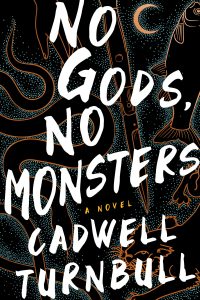Gary K. Wolfe reviews Alastair Reynolds
Revenger, Alastair Reynolds (Gollancz 978-0-575-09053-8, £18.99, 432pp, hc) September 2016; (Orbit 978-0-316-55556-2, $14.99, 560pp, pb) February 2017.
 There’s a reason why space opera is called space opera, and it isn’t a good one. By now most SF readers are familiar with Wilson Tucker’s coinage of the term in 1941, modeled on ‘‘horse opera’’ for Westerns (which some 1930s pulp SF was thought to resemble), which in turn was modeled on ‘‘soap opera’’ from domestic radio melodramas. Grand opera seemed a pretty good shorthand for the over-the-top emotional sturm und drang of those serials, but it made less sense applied to Westerns, and still less when applied to pulp SF, where the emotions often got no further than gimlet-eyed heroic determination and pop-eyed mad-scientist megalomania. The opera part didn’t get lost – it was simply never there in the first place.
There’s a reason why space opera is called space opera, and it isn’t a good one. By now most SF readers are familiar with Wilson Tucker’s coinage of the term in 1941, modeled on ‘‘horse opera’’ for Westerns (which some 1930s pulp SF was thought to resemble), which in turn was modeled on ‘‘soap opera’’ from domestic radio melodramas. Grand opera seemed a pretty good shorthand for the over-the-top emotional sturm und drang of those serials, but it made less sense applied to Westerns, and still less when applied to pulp SF, where the emotions often got no further than gimlet-eyed heroic determination and pop-eyed mad-scientist megalomania. The opera part didn’t get lost – it was simply never there in the first place.
Alastair Reynolds, one of the leading lights of the New Space Opera movement, did much to restore emotional resonance to the genre, to play the old songs once more but with feeling (as well as with considerable scientific and economic sophistication), and with Revenger he shamelessly returns to the operatic intensity, and many of the character types, of his Romantic forbears. The betrayal-and-revenge plot owes more to Dumas, Hugo, and Stevenson than to earlier SF (there are some echoes of Bester, but then he owed a lot to Dumas), and the characters include space pirates, a kidnapped sister, a weak but scheming father, a Javert-like pursuer, a loyal old robot servant, a scary and sadistic supervillain, an evil doctor, a kindly space captain, and a couple of noble self-sacrifices. Add to this some alien technology (including what amounts to an invisibility cloak), archeological treasures protected by Indiana Jones-style booby traps, squabbling spaceship crews, and an intriguing but understated backstory involving millions of years of Solar System history, and you’d seem to have a recipe for goulash.
And so what? Revenger is tremendous fun, with perhaps the most linear, straightforward, and kinetic plot of all Reynolds’s novels. Much of its appeal depends on the narrative voice of the teenage Arafura Ness, whose coming of age – in the form of her transformation from a bookloving student into a mercilessly efficient fighter – keeps the novel firmly anchored in its characters. Arafura’s more adventurous older sister Adrana persuades her to run away from a party to the colorful, Bladerunner-like bazaar Neural Alley, where a broker named Madame Granity discovers they each have a talent for ‘‘reading the bones,’’ or psychically connecting to old alien skulls that are used by spaceship crews as interplanetary dowsing rods to discover the secrets of ‘‘baubles,’’ pockets of ancient technology that are hazardous to explore, but that may yield artifacts or ‘‘Ghosty stuff’’ that will make a crew’s fortune and reputation. These high-tech treasure chests are the most contrived and game-like elements of Reynolds’s story – they open up only for short intervals, and sometimes contain deadly traps – but they also serve to reveal that this far-future ‘‘Congregation’’ of thousands of worlds and habitats is essentially a scavenger economy, dependent on the remnants of advanced technologies dating back millions of years. We get tantalizing hints of how the Congregation was organized some ten million years earlier from the ‘‘rubble and junk’’ that preceded it, of a cataclysm called the Sundering, of various ‘‘Occupations’’ that have helped reduce civilization to its present version of a hunter-gatherer economy – and most intriguingly, the suggestion that this vast conglomeration of worlds, nearly all reachable by the solar sailing ships, is a single system, with the ‘‘Old Sun’’ at its center and the great ‘‘Empty’’ beyond. We’ve noted earlier that a good deal of recent hard SF has confined itself to the solar system, but Reynolds seems to argue that this is hardly a confinement, that the solar system is huge, and that, given a few million years of history, it can offer as great a plenitude of worlds for adventure as the old cosmic galaxy-busters.
Fascinating as this universe may be, Reynolds presents it to us mostly through allusion and indirection, with little of the detailed expository world-building of his earlier novels. There are precious few infodumps, for the simple reason that he doesn’t give himself time for them: the tale moves along at a breakneck pace from the moment, on their first mission, that Arafura (who takes to calling herself the more suggestive Fura) is separated from her sister during a deadly raid by the legendary and extremely nasty pirate queen Bosa Sennen, one of the more delicious villains in recent SF. Fura is determined to exact vengeance and rescue Adrana, and the narrative traces who and what she must become in order to do this, overcoming the manipulations of her father, his henchman, and the aforementioned evil doctor, with only her trusted-but-much-battered family robot as an ally. All this is carried forward with some unlikely but what-the-hell plot developments and with characters and dialogue that wouldn’t be out of place in Treasure Island. Private conversations are ‘‘chinwags,’’ crusty old toughs refer to Fura as ‘‘girlie,’’ an older woman who becomes a sort of mentor warns Fura to ‘‘Don’t believe half the stories, and of the half that’s left, don’t believe half of them, neither.’’ Fura herself, who began as a rather bookish teenager who only ‘‘wanted to be back in my own room, next to the parlour with all our books and maps and games,’’ eventually starts saying things like ‘‘Luck’s a rum old thing,’’ as though prepping for a chinwag with Long John Silver himself. By then, though, we’re pretty much ready to set sail with her and her motley crew again, should Reynolds decide that there’s more to the Congregation, and to the Ness sisters, than we’ve seen so far.







